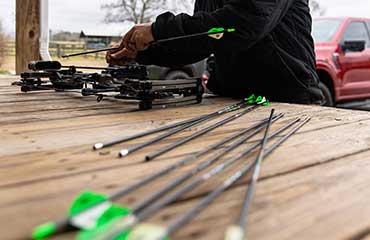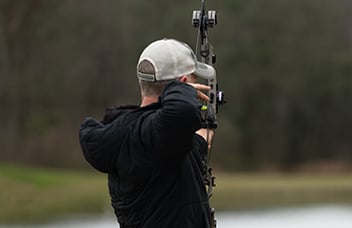Whether you use fixed-blade or mechanical broadheads, tuning your bow will make your arrows fly better.If you have access to a paper tuning device, by all means use it.A paper-tuned bow will shoot almost any broadhead with minimal, if any, adjustment.
If you can't use a paper tuner, shoot your arrows with a head identical to one you'll be using in the woods. If you're still hitting the kill zone, pat yourself on the back and get ready to hunt. If your broadhead-equipped arrows group differently from your field points, however, you have several options.
If the difference is only slight and the arrows are grouping well, just adjust your sight pins until you're back in the bullseye.If you see a big difference and/or the arrows are not grouping well, it's a good idea to make some tuning adjustments.If you can't see your arrows well as they fly, have a friend stand just behind you to watch your arrow as you shoot.If the arrow is porpoising (tailing left and right) on its way to the target, you'll need to move your rest in or out until you get clean arrow flight.If the arrow wobbles up and down on its way to the target, you need to move the nocking point OR adjust the rest up or down.
Once your arrows are flying smoothly, adjust your sight pins and you should be all set.
Something to keep in mind as you make bow adjustments is that most things on your bow should look normal and fairly "square."In other words, when looking at your bow from behind, nock an arrow and check to see that it looks straight as it protrudes from the bow.Next look at it from the side.Your arrow should come off the string at just over 90 degrees (slightly nok high) and can even look perfectly square if you're shooting a string loop.
While there's no doubt that tuning for broadheads is a pain, it's one of those essential chores that many bowhunters skip.Those same hunters often end up paying the price with a miss... or worse.




.png)